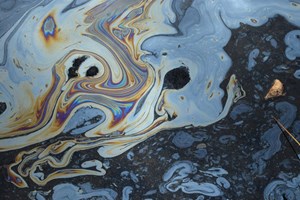New report shows oil spills from offshore transportation way down
NEW ORLEANS (AP) — Oil and natural gas spills from tankers and pipelines in U.S. waters dropped dramatically from the last decade of the 1990s to the one from 2010 through 2019, according to a federal report Wednesday.

The amounts spilled and dumped in wastewater from drilling rigs and production platforms rose, but — if the disastrous 2010 Gulf of Mexico spill isn’t counted — the increase is mainly because there is more work offshore, said the National Academies of Sciences, Engineering, and Medicine.
“It is evident that regulatory changes, advances in science and technology, and (for the most part) attention to safety would have helped to make North American waters less polluted with oil” without the Deepwater Horizon spill, the report said.
But the BP well blew, killing 11 people and spewing millions of gallons (kiloliters) of oil into the Gulf of Mexico off Louisiana over months. Another big contributor during the past decade was the nation’s longest-running oil spill, also off Louisiana.
The 497-page report was written by an international committee of academic and industry experts and reviewed by many others.
“Overall, I think they have done a very comprehensive job,” said Anthony Knap, director of the Geochemical and Environmental Research Group at Texas A&M University, who was not an author or reviewer.
Like a report released in 2003, this one — “Oil in the Sea IV: Inputs, Fates, and Effects” — said that oil in runoff, largely from cars and cities, is the biggest source of ocean oil pollution, with natural seeps second and spills in third place.
But hard data on oil in rivers is so scarce and the range of possible amounts so huge that — although the report put the figure from the U.S. about 20 times the earlier estimate — it couldn’t say whether there was an actual increase.
Increases in urban land area, population and vehicle ownership make an increase “plausible ... but it is unclear by how much,” the report said.
“One of the big findings is in general we do not have adequate data,” report committee chair Kirsi K. Tikka, of Ardmore Shipping and Pacific Basin Shipping, said in a phone interview Tuesday from London.
Natural seeps of oil and natural gas from the ocean floor were estimated at nearly 30.8 million gallons (116,500 kiloliters) a year. That’s about 60% of the 1990s estimate, but the change is because recent estimates of seeps in the Gulf of Mexico and off California are more accurate, Tikka said.
“We have more techniques to measure the seeps,” but those two areas are the only ones with data, she said.
The spill data is the most accurate part of the report, Tikka said. “As you probably know, even on large oil spills you never have exact numbers,” she added, “but those are the best we have available.”
Spills from tanker ships fell from an average of 1.6 million gallons (6,175 kiloliters) a year in the last decade of the 1900s to 61,600 gallons (230 kiloliters) in the decade just past. Over the same period, pipeline spills went from nearly 585,000 gallons (2,210 kiloliters) a year to just under 117,000 gallons (440 kiloliters).
Laws and regulations after the Exxon Valdez ran aground in 1989 near its namesake Alaska town account for much of the difference in tanker spills, Tikka said.
Among other things, she noted, the Oil Pollution Act of 1990 phased in a requirement for double-hulled tankers in U.S. waters, and other countries and international bodies followed suit.
Increased inspection and maintenance accounts for the reduction in pipeline spills, she said.
Spills from offshore oil drilling and production rose sevenfold over the period, to about 338,600 gallons (1,280 kiloliters) a year. And oil in well wastewater was estimated at about 2 million gallons (7,900 kiloliters) a year — about 2.5 times the estimate for the 1990s.
The wastewater oil is likely an overestimate, Tikka said. Oil companies report the total amount of “produced water,” but not the amount of oil it held, so the report used the highest allowable percentage. “Most likely the levels are less,” she said, adding that both figures reflect increased drilling and production.
Without Deepwater Horizon, Tikka said in an email, “spillage per unit of production has decreased by 65% since the last ... report, but remained relatively constant in the last 20 years.”
Texas A&M’s Knap said in an email, “Just like discharges from ships, operators are far more diligent than they were in the past so a straight line from number of platforms to more oil is not a given.
Related News
From Archive

- Glenfarne Alaska LNG targets late-2026 construction start for 807-mile pipeline project
- U.S. water reuse boom to fuel $47 billion in infrastructure spending through 2035
- $2.3 billion approved to construct 236-mile Texas-to-Gulf gas pipeline
- Major water pipe break in Puerto Rico hits over 165,000 customers
- Potomac River Tunnel project enters construction phase beneath Washington, D.C.
- Pennsylvania American Water launches interactive map to identify, replace lead water service lines
- Trump's tariffs drive $33 million cost increase for Cincinnati sewer project
- Utah city launches historic $70 million tunnel project using box jacking under active rail line
- Tulsa residents warned after sewer lines damaged by boring work
- Fatal trench collapse halts sewer construction in Massachusetts; two workers hospitalized



Comments